
- Email support@dumps4free.com

Topic 5: Mix Questions
You have an Azure subscription named Subscription1 that contains a resource group named RG1.
In RG1, you create an internal load balancer named LB1 and a public load balancer named LB2.
You need to ensure that an administrator named Admin1 can manage LB1 and LB2. The solution must follow the principle of least privilege.
Which role should you assign to Admin1 for each task? To answer, select the appropriate options in the answer area.
NOTE; Each correct selection is worth one point.

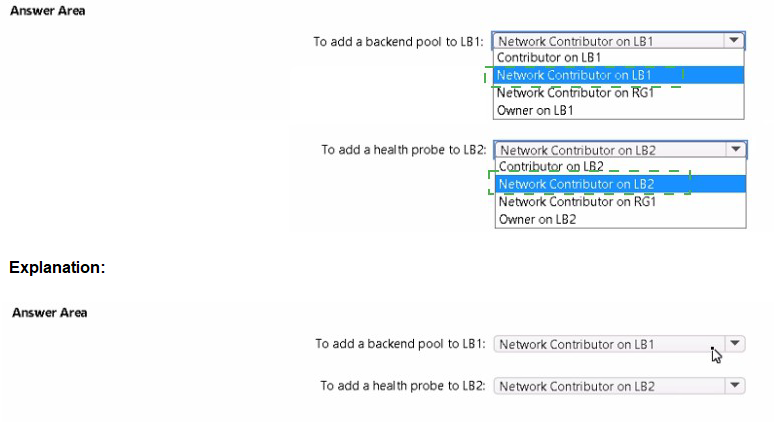
You have an Azure subscription. The subscription contains a storage account named storage1 that has the lifecycle management rules shown in the following table.
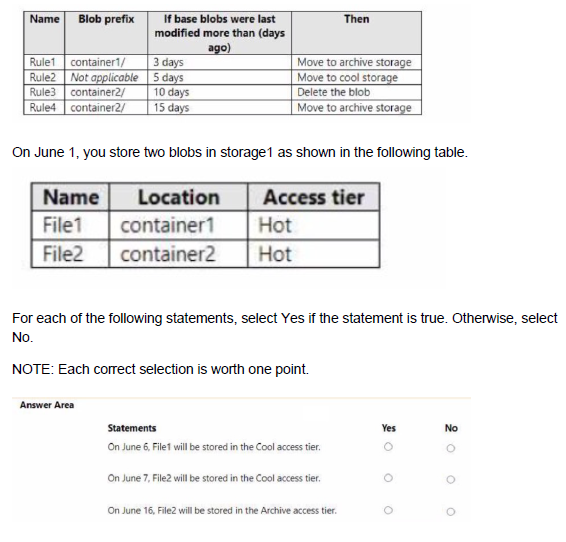
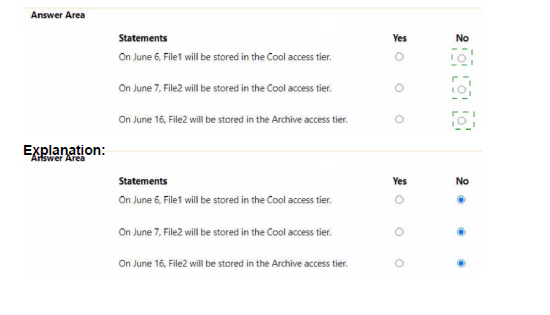
You have an Azure Storage account named storage1 that uses Azure Blob storage and Azure File storage. You need to use AzCopy to copy data to the blob storage and file storage in storage1. Which authentication method should you use for each type of storage? To answer, select the appropriate options in the answer area.
NOTE: Each correct selection is worth one point.
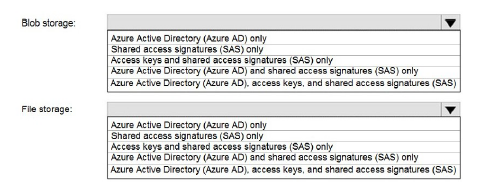
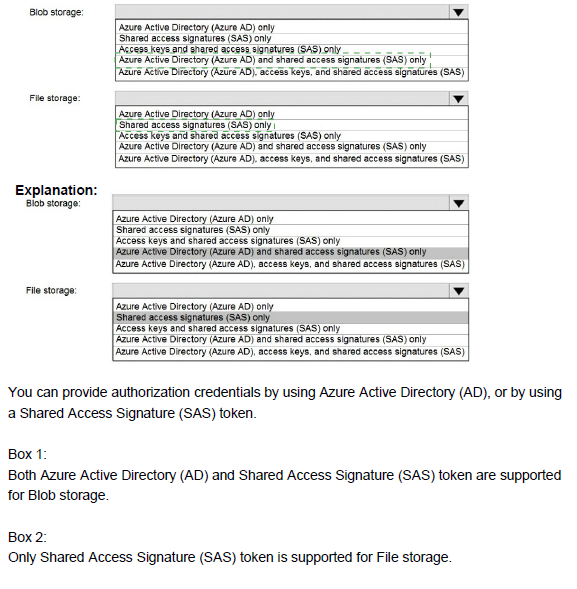
Note: This question is part of a series of questions that present the same scenario. Each question in the series contains a unique solution that might meet the stated goals. Some question sets might have more than one correct solution, while others might not have a correct solution.
After you answer a question in this section, you will NOT be able to return to it. As a result, these questions will not appear in the review screen.
You have an Azure subscription that contains 10 virtual networks. The virtual networks are hosted in separate resource groups.
Another administrator plans to create several network security groups (NSGs) in the subscription.
You need to ensure that when an NSG is created, it automatically blocks TCP port 8080 between the virtual networks.
Solution: You configure a custom policy definition, and then you assign the policy to the subscription.
Does this meet the goal?
A.
Yes
B.
No
No
Explanation:
A custom policy definition is a way to define your own rules for using Azure resources. You can use custom policies to enforce compliance, security, cost management, or organization-specific requirements. However, a custom policy definition alone is not enough to meet the goal of automatically blocking TCP port 8080 between the virtual networks. You also need to create a policy assignment that applies the custom policy definition to the scope of the subscription. A policy assignment is the link between a policy definition and an Azure resource. Without a policy assignment, the custom policy definition will not take effect. Therefore, the solution does not meet the goal.
References:
Tutorial: Create a custom policy definition
Create and manage policies to enforce compliance
You plan to automate the deployment of a virtual machine scale set that uses the Windows Server 2016 Datacenter image.
You need to ensure that when the scale set virtual machines are provisioned, they have web server components installed.
Which two actions should you perform? Each correct answer presents part of the solution.
NOTE Each correct selection is worth one point.
A.
Modify the extensionProfile section of the Azure Resource Manager template.
B.
Create a new virtual machine scale set in the Azure portal.
C.
Create an Azure policy.
D.
Create an automation account
E.
Upload a configuration script.
Modify the extensionProfile section of the Azure Resource Manager template.
Create a new virtual machine scale set in the Azure portal.
To automate the deployment of a virtual machine scale set that uses the Windows Server 2016 Datacenter image and has web server components installed, you need to perform the following actions:
Modify the extensionProfile section of the Azure Resource Manager template. This section defines the extensions that are applied to the scale set virtual machines after they are provisioned. You can use the Custom Script Extension to run PowerShell scripts that install and configure the web server components. For more information, see Deploy an application to an Azure Virtual Machine Scale Set1. Upload a configuration script. This is the PowerShell script that contains the commands to install and configure the web server components. You can upload the script to a storage account or a GitHub repository, and then reference it in the extensionProfile section of the template. For an example of a configuration script, see Tutorial: Install applications in Virtual Machine Scale Sets with Azure PowerShell2.
| Page 2 out of 64 Pages |
| Previous |